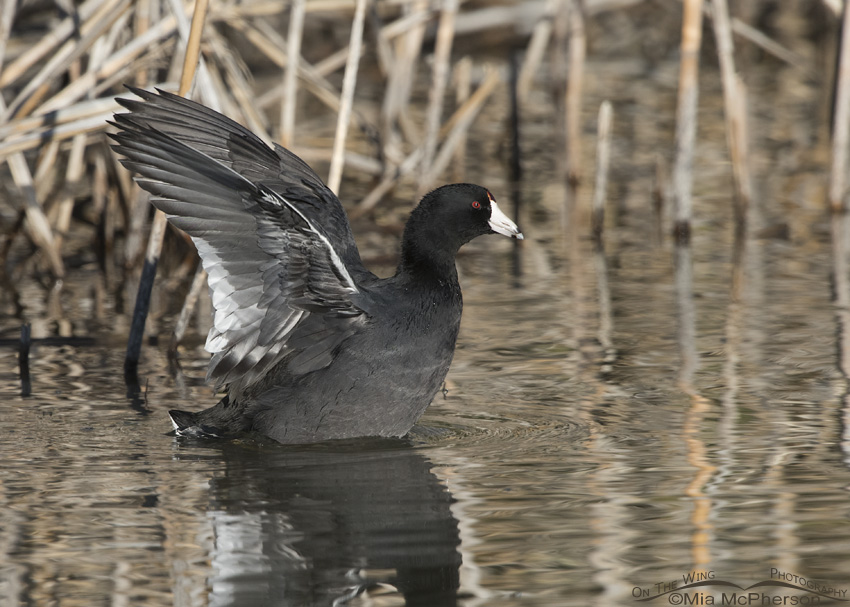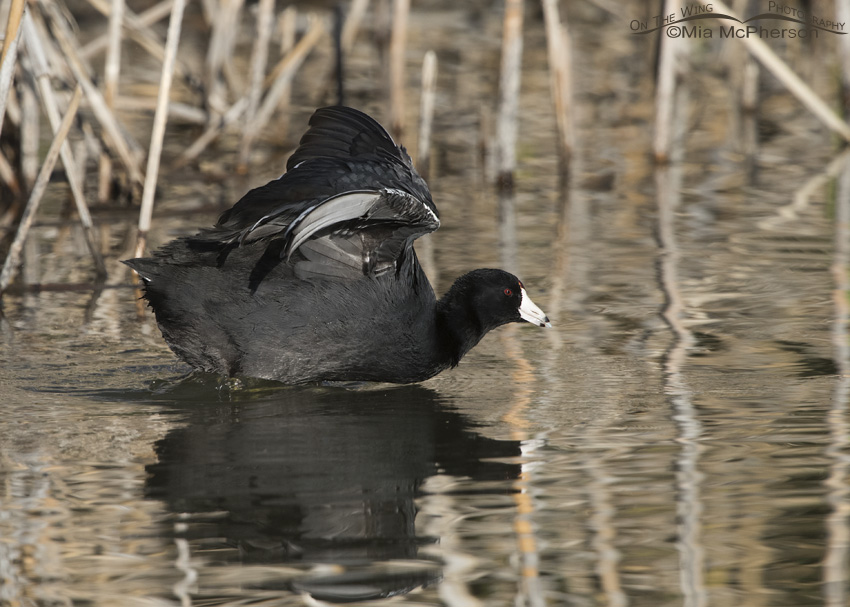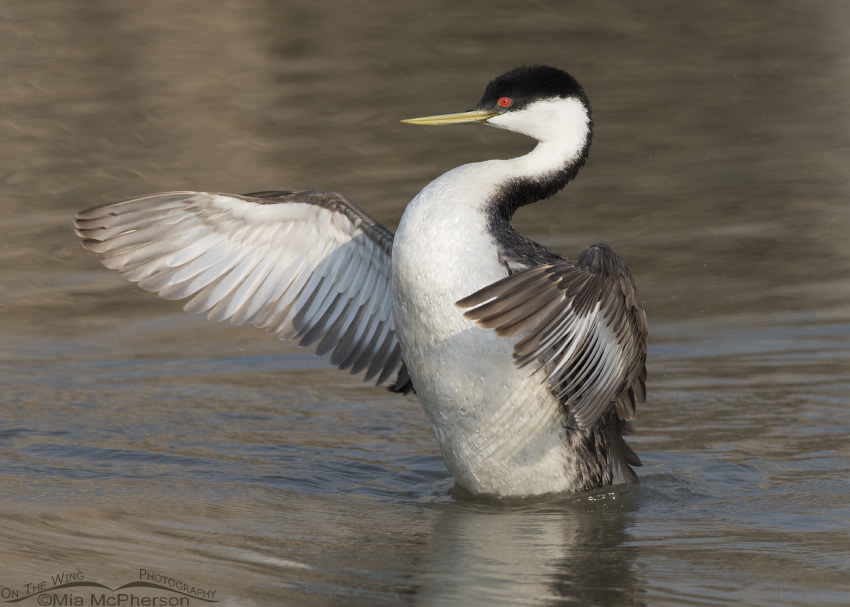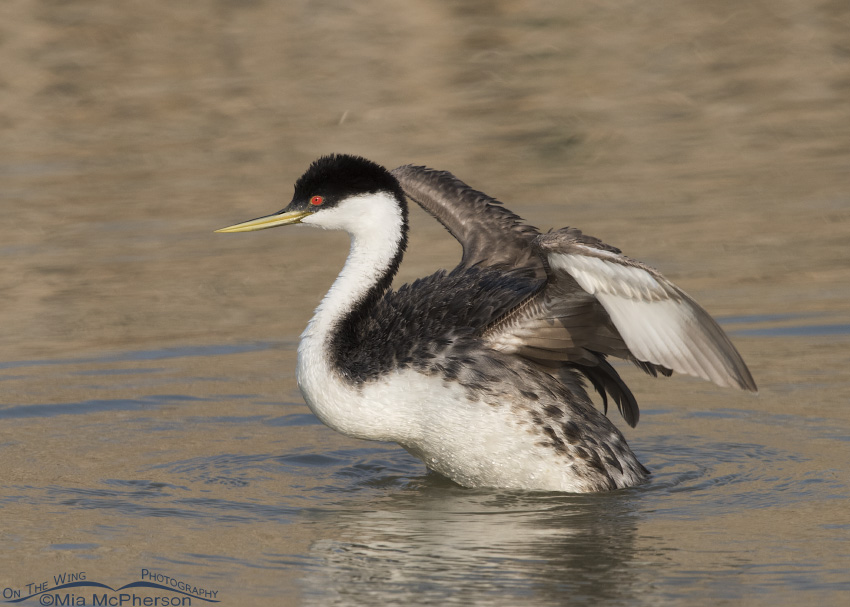 American Coot flapping its wings – Nikon D810, f7.1, 1/2500, ISO 500, -1.0 EV, Nikkor 500mm VR with 1.4x TC, natural light
American Coot flapping its wings – Nikon D810, f7.1, 1/2500, ISO 500, -1.0 EV, Nikkor 500mm VR with 1.4x TC, natural light
It was great having my camera back in my hands yesterday and though it wasn’t very birdy at Bear River Migratory Bird Refuge I did find some American Coots to photograph. One of the coots had been preening when I first drove up and I hoped that after it was done preening it would shake off before heading out to eat.
 American Coot settling back onto the water – Nikon D810, f7.1, 1/2500, ISO 500, -1.0 EV, Nikkor 500mm VR with 1.4x TC, natural light
American Coot settling back onto the water – Nikon D810, f7.1, 1/2500, ISO 500, -1.0 EV, Nikkor 500mm VR with 1.4x TC, natural light
I wasn’t disappointed because it helps to know your subjects behavior and coots usually shake and flap right after they are finished preening. I took a nice series of the coot flapping its wings and then settling down on the water again.
 A Western Grebe flapping its wings on the Bear River – Nikon D810, f7.1, 1/1600, ISO 500, Nikkor 500mm VR with 1.4x TC, natural light
A Western Grebe flapping its wings on the Bear River – Nikon D810, f7.1, 1/1600, ISO 500, Nikkor 500mm VR with 1.4x TC, natural light
After I came home and processed my coot images I realized I had Western Grebe images showing the same behavior after a preening session that I wanted to share too.
The reason? Even though these grebe images show the same behavior as the coot images there are people, and photographers, that will like and find the the grebe images more appealing because coots are “so common” whereas the Western Grebes aren’t as much. Some photographers won’t stop to photograph the coots but they would the grebes.
 A Western Grebe settling on the water after a wing flapping session – Nikon D810, f7.1, 1/2000, ISO 500, Nikkor 500mm VR with 1.4x TC, natural light
A Western Grebe settling on the water after a wing flapping session – Nikon D810, f7.1, 1/2000, ISO 500, Nikkor 500mm VR with 1.4x TC, natural light
Western Grebes are fairly common here in northern Utah during the breeding season but in other parts of the U.S. they aren’t common at all while American Coots can be found in every one of the lower 48 states.
Both American Coots and Western Grebes have fascinating red eyes, interesting bills and black & white plumage. I think it is interesting how one species is “liked” more than the other.
I happen to like common birds very much and I think that common birds can be uncommonly beautiful given a chance. I’ll stop for them.
Life is good.
Mia
Click here to see more of my American Coot photos plus facts and information about this species. Click here to see more of my Western Grebe photos plus facts and information about this species.


Don’t forget coot feet, I love their feet!
I agree that a lot of people will sigh, “Oh, Coots again” but I find them fascinating so am glad that they are included. On my trip to Jasper last week I saw one unidentified raptor, some common mergansers , a few Canada geese, American Crows, Ravens, Grey Jays and an American Coot.
Common does NOT mean beautiful. Or worrth watching. And marvelling at.
Beautiful Imaages, Mia. Also really like your dialogue with them.
Coots remind me of a child’s drawing if a duck…especially their feet. I like these action shots. Also like seeing a flick of them all facing into the wind. Funny little guys…..
I’m a coot fan. I live on Galveston Bay, and the arrival of the coots always is the firm sign of seasonal change. They arrive in fall and leave in spring so quietly. Either they’re here, or they’re not, but when they’re here, they’re enjoyable. We have the Western Grebes, too, although not so many.
I’ve just found your blog, and am enjoying it tremendously. I have my first DSLR camera, and it’s good to have such beautiful images as encouragement in the learning process.